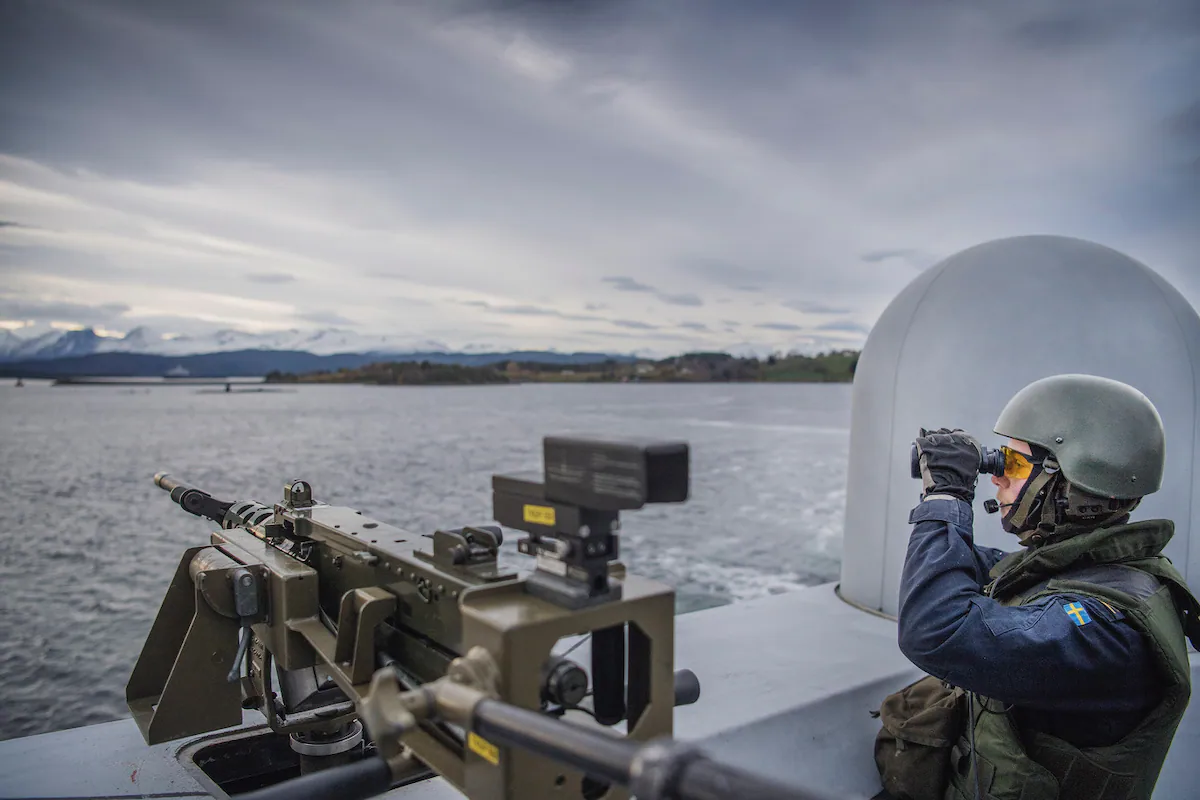
After three ruinous years of war in Ukraine, NATO has new reasons to worry about further Russian incursion into Europe. Last week, in Poland, marked the first time that Russian drones have been downed over the territory of a NATO member state. Earlier this summer, Estonian naval forces intercepted an unflagged tanker in its exclusive economic zone, operating under Russia’s shadow fleet. Recent Latvian intelligence reports suggest that, in response to Sweden and Finland’s accession to full NATO membership, Russian Armed Forces reorganized its military districts, bordering Latvia, into the newly formed Leningrad and Moscow military districts. These provocations by air, sea and land indicate Russia’s willingness to test NATO member states’ responsiveness and their defenses.
In recognition of the evolving and increasingly aggressive cross-domain threat posed by Russia, NATO should look to one of its most often overlooked and most versatile capabilities: its amphibious vessels. With the addition of Sweden and Finland, nine NATO member states operate amphibious ships, all at high levels of readiness, regularly participating in exercises, trainings and operations in support of national and multilateral objectives. A 2018 RAND Corporation study assessed NATO’s amphibious capacity as “considerable,” but “underrecognized” and in need of improved C2 constructs to bolster interoperability among amphibious task groups (ATG). Since then, particularly in light of the integration of Swedish and Finnish capabilities, NATO’s amphibious capacity has grown and is up to the challenge of providing the requisite presence needed to deter an emboldened Russia and project power at sea in the Nordic-Baltic region.
RELATED
In 2024, Norway, despite having no amphibious fleet of its own, established a NATO Amphibious Warfare Center to provide the alliance with dedicated training space in the Arctic for amphibious capabilities. By preparing to conduct amphibious operations in the Arctic region, NATO is equipping itself with a fuller menu of options. By continuing to exercise and improve the readiness of ATGs, which can be integrated into the NATO command structure near instantaneously, NATO is arming itself with a rapid response tool capable of maneuvering through open seas, fjords, littorals and straits from the GIUK Gap to Kaliningrad. The unique geographic footprint and operational environment of these waterways are marked by heavy flows of commercial shipping traffic, shallow waters, varied salinity depending on the time of year and a smattering of islands, making amphibious vessels perfect for navigating the complex environment with relative ease.
In the Baltic, amphibious vessels maneuver through clusters of islands and provide forces with enhanced intelligence, surveillance and reconnaissance opportunities and ideal positioning for forward deployment. Sweden’s stealth Visby-class corvette ships are designed for mine countermeasures and anti-submarine warfare, but can also serve as take-off, landing and refueling platforms for helicopters. Tailored for the Baltic Sea, the ship’s torpedo system can navigate shallow waters and complex topography while locating submarines. In recent years, enhancements have been made to position air missile defense systems aboard these ships, thereby extending their combat range. Similarly, the lightweight and fast Swedish Combat Boat 90 (CB 90) can operate as a floating command post or transform into a gunboat with repositioned armaments.
The range and versatility of these vessels make them ideal for hunting Russian submarines in High North waterways, gathering intelligence in hard-to-navigate waters and rapidly deploying troops throughout the region. The vessels’ size allows for the low-signature mobility needed to conduct expeditionary advanced base operations. Furthermore, vessels such as Finland’s Jehu-class landing craft are able to operate in potentially contested environments and offer sustainment for a larger fleet composition or units deployed in a weapons engagement zone.
By strategically expanding the use of amphibious vessels in the High North, NATO can preemptively occupy waterways to promote sea control and deny Russian subversion. Their presence will be critical to protecting undersea cable infrastructure and sea lines of communication, both of which Russia has aggressively tampered with in recent years. Furthermore, information operations and surveillance measures will benefit from amphibious ships’ ability to access waterways difficult for other parts of the fleet to access. As launch pads for unmanned systems, the vessels can increase the fleet’s lethality and penetration into possible weapons engagement zones.
NATO’s most recent maritime strategy, released in July 2025, calls for upgraded technology for underwater reconnaissance and undersea warfare. While NATO member states are making strides to advance undersea capabilities, states with amphibious vessels can supplement force posture in the High North, particularly in the Baltic, with existing sensors and undersea detection capabilities aboard amphibious ships. Continued demonstration of amphibious capacity and exercise of C2 will improve the ships’ integration into the NATO command structure. Amphibious capabilities are available, up to the task and a natural fit to contribute to the alliance’s defense via sea control and power projection vis-à-vis Russia.
Gabrielle Moran is a defense analyst and associate on Dataminr’s Department of Defense team, specializing in U.S. Navy and U.S. Marine Corps force design, requirements and AI integration. She served as the inaugural chief of staff at the Center for Maritime Strategy from 2022 to 2024. She is based in Washington, D.C.



